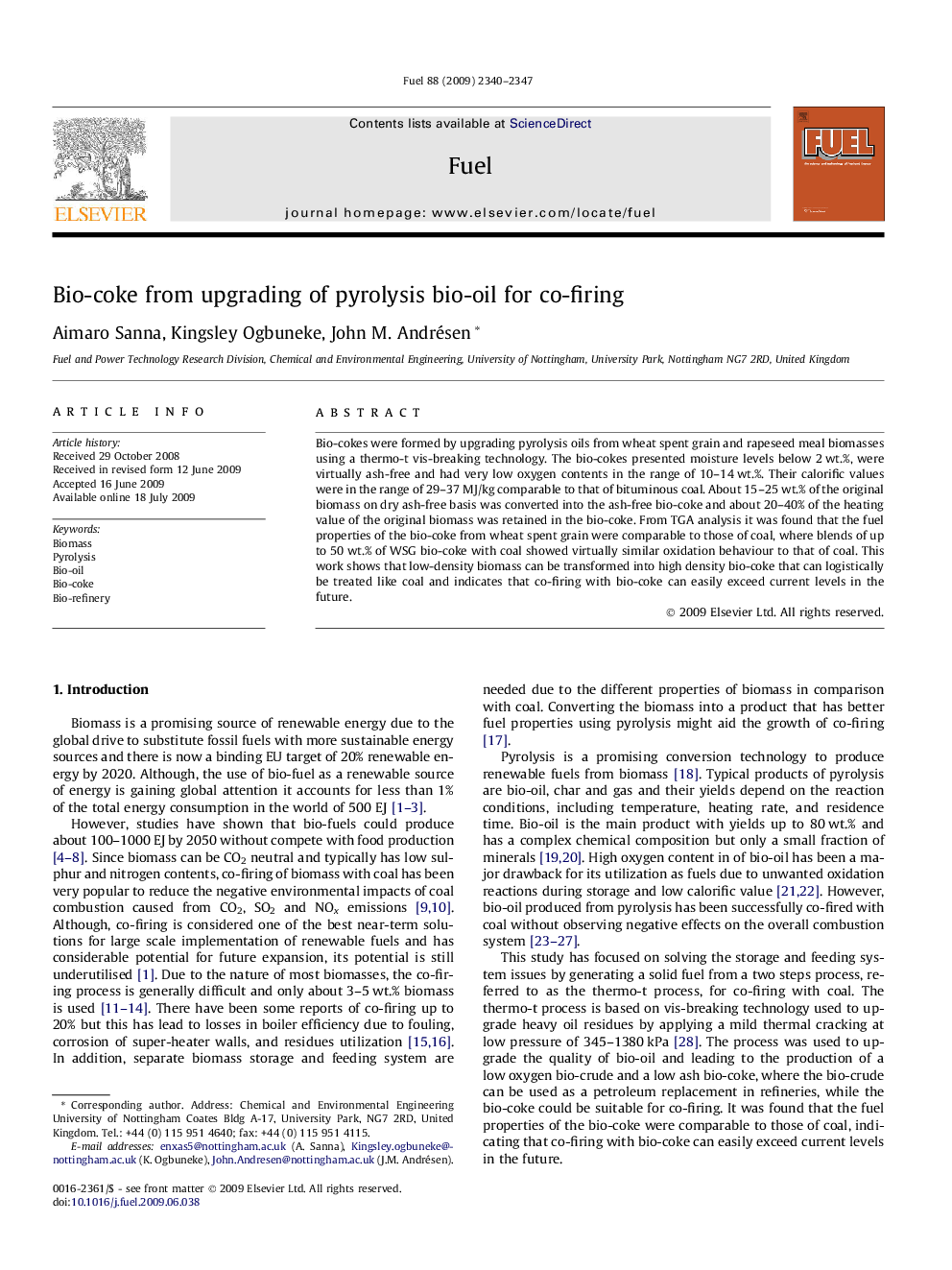| Article ID | Journal | Published Year | Pages | File Type |
|---|---|---|---|---|
| 207839 | Fuel | 2009 | 8 Pages |
Bio-cokes were formed by upgrading pyrolysis oils from wheat spent grain and rapeseed meal biomasses using a thermo-t vis-breaking technology. The bio-cokes presented moisture levels below 2 wt.%, were virtually ash-free and had very low oxygen contents in the range of 10–14 wt.%. Their calorific values were in the range of 29–37 MJ/kg comparable to that of bituminous coal. About 15–25 wt.% of the original biomass on dry ash-free basis was converted into the ash-free bio-coke and about 20–40% of the heating value of the original biomass was retained in the bio-coke. From TGA analysis it was found that the fuel properties of the bio-coke from wheat spent grain were comparable to those of coal, where blends of up to 50 wt.% of WSG bio-coke with coal showed virtually similar oxidation behaviour to that of coal. This work shows that low-density biomass can be transformed into high density bio-coke that can logistically be treated like coal and indicates that co-firing with bio-coke can easily exceed current levels in the future.
